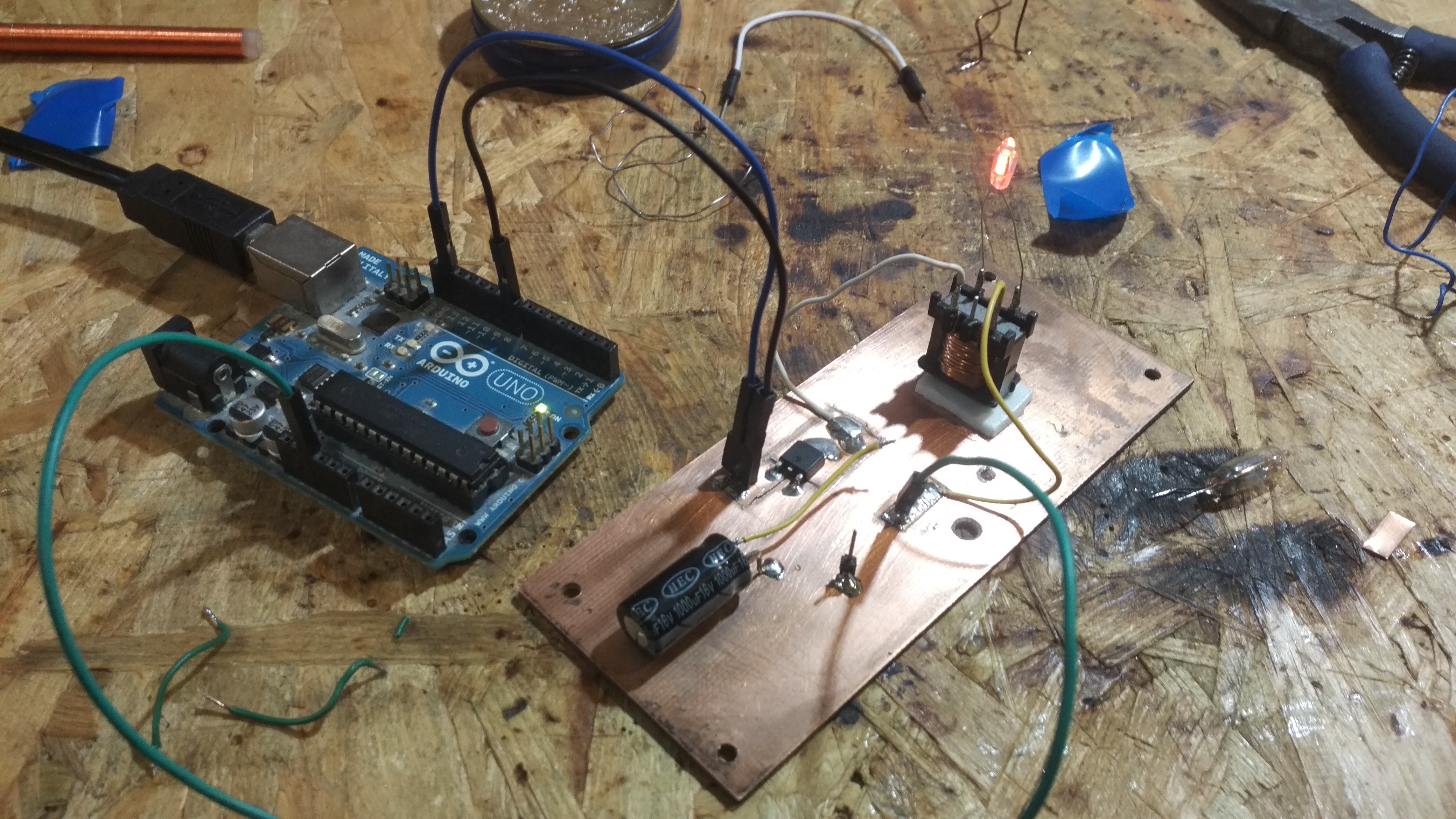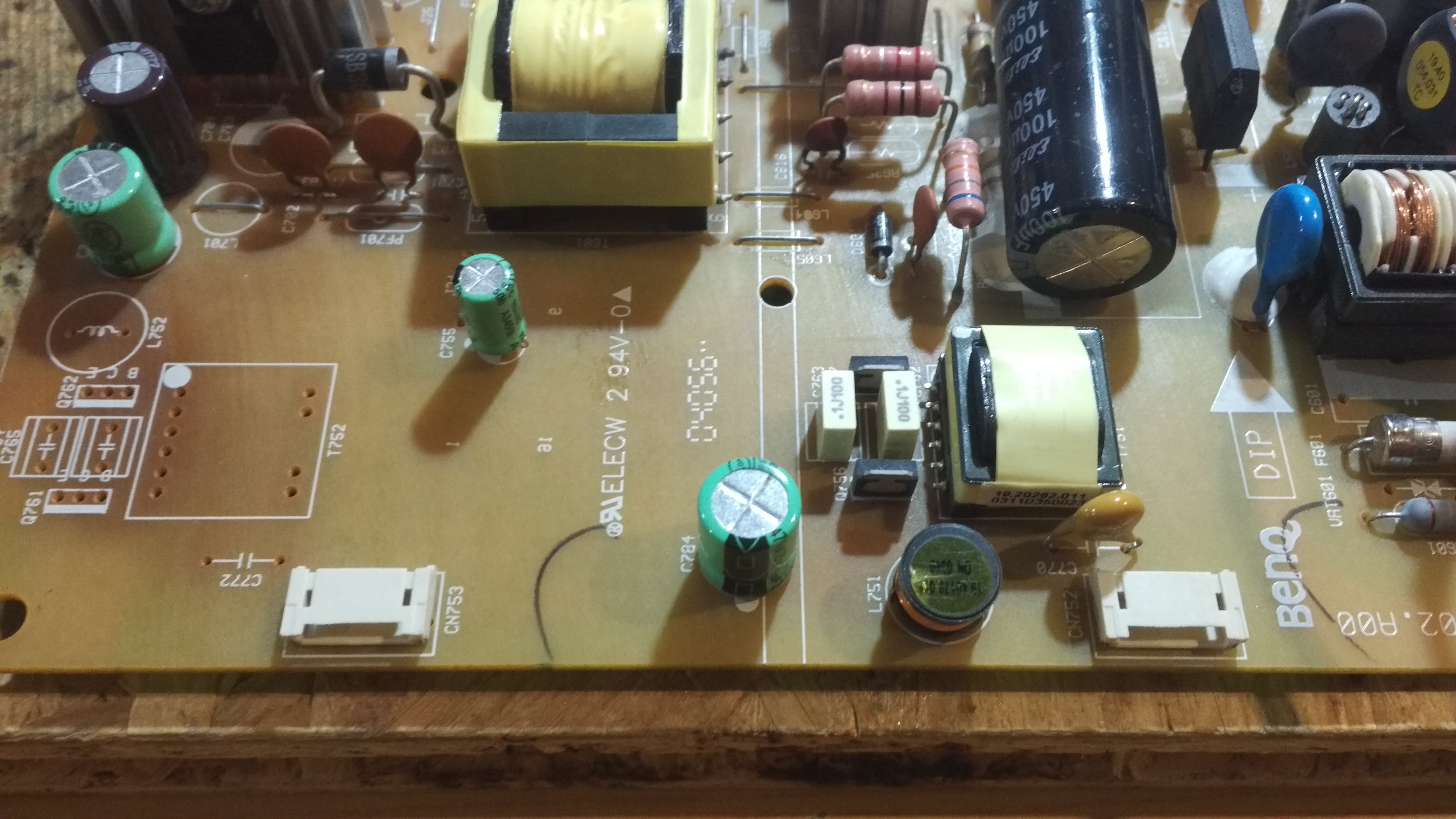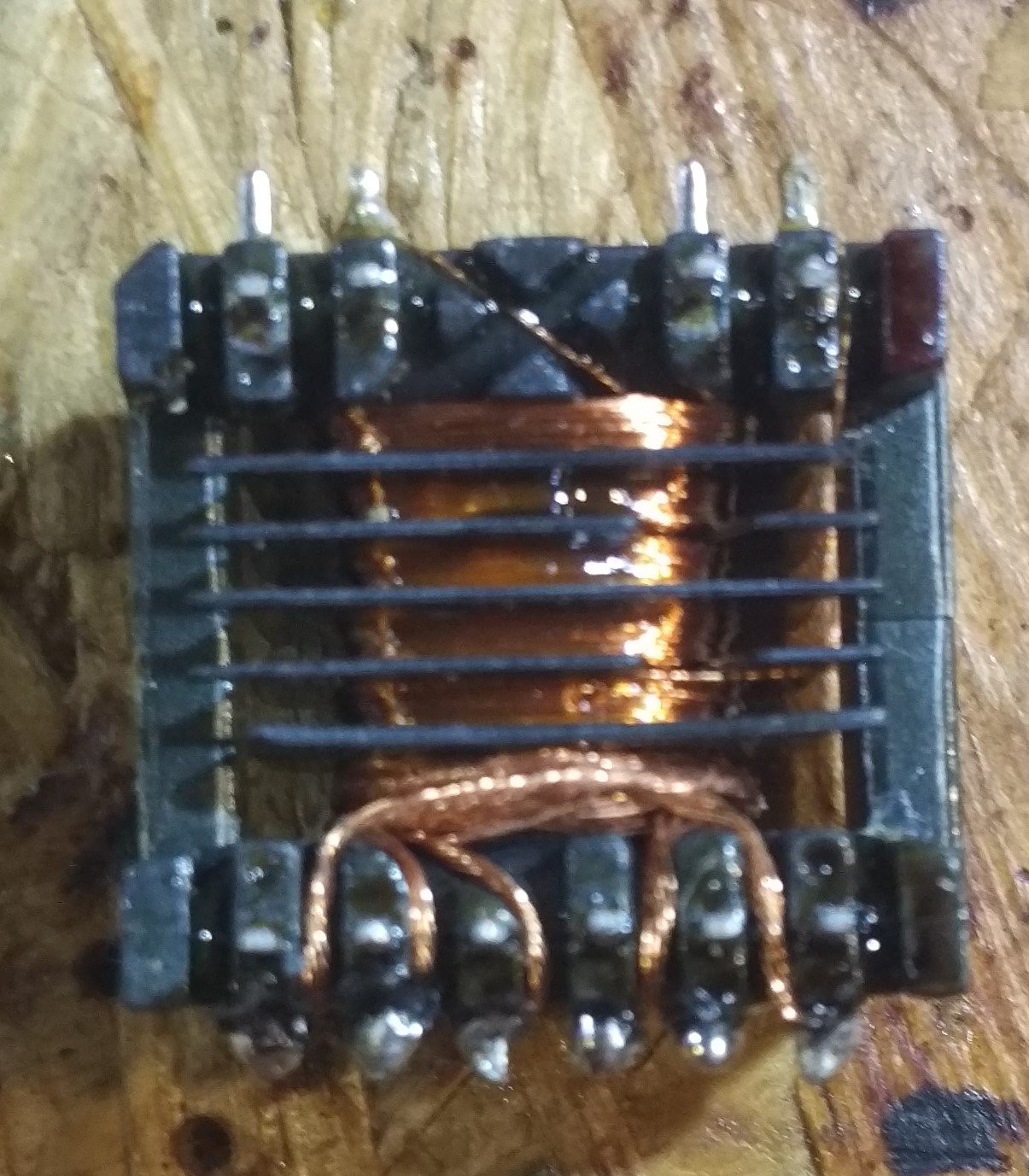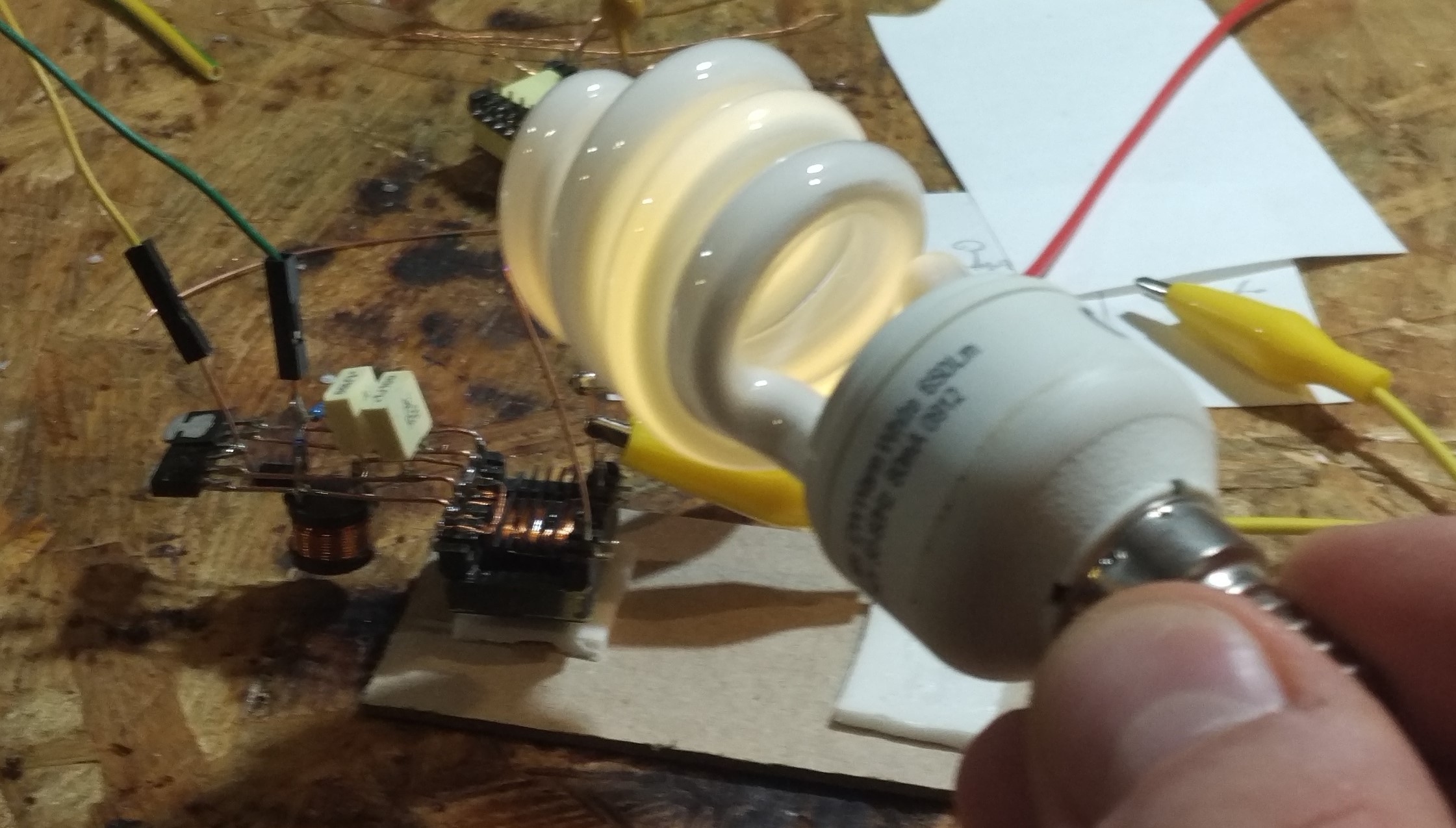My main goal was to create some awesomeness, that is simple enough to implement in free form circuitry. A high voltage resonator seemed like a good choice. My first idea was to create something like a "tesla coil". I soon had to realize that these are not as simple as they seem to be, so I turned to using traditional transformers.
I had these little trafos lying around. They're from compact fluorescent lamps, which have an inverter inside their base to provide voltage to the tube. I also had some neon lamp bulbs, so the solution was obvious. Using a MOSFET and an Arduino, I managed to drive this with a 100 kHz square wave, and there was light. Funny thing is, since my square wave was asymmetric, only one electrode of the lamp was glowing.

It was nice, but I though I could do one better.
Then I came across this video by GreatScott! where he creates an arc lighter using an inverter from and LCD monitor. This was just what I need! So I salvaged the transformer and the driver circuit from a faulty monitor PSU I had lying around (I have lots of junk lying around), rewound the primary coils, and so I began my journey in high voltage (well, medium voltage to be honest) electronics.
 |  |
For the winding, I used this so-called "Litz-cable" that I saved from another transformer I torn down. These cables consist of many small diameter enameled copper wires. The purpose of using this instead of a single conductor is to minimize the losses from resistance due to the skin effect (especially in high frequency applications).
The driver is called a 'Royer converter'. I soldered together the circuit with the original components in-air, and supplied it with 5 volts. I could draw some neat arcs, and also managed to light a fluorescent lamp. Unfortunately, this still wasn't enough to show corona effect, so I needed something to put on top of it, but nevertheless, it is still a nice circuit.

 Szabolcs Lőrincz
Szabolcs Lőrincz
Discussions
Become a Hackaday.io Member
Create an account to leave a comment. Already have an account? Log In.